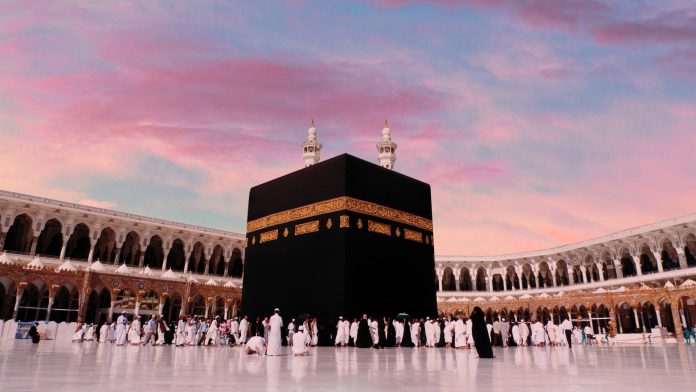The Holy Kaaba, situated at the center of the Masjid al-Haram in Mecca, Saudi Arabia, holds immense significance for the Islamic faith. As the holiest site in Islam, millions of Muslims from around the world make their pilgrimage, or Hajj, to this sacred destination. The Kaaba has undergone various modifications and renovations throughout history, including changes to its roof. This article delves into the details of the roofs that have graced the Kaaba, from its initial construction to the present day.
Why was the roof of the Kaaba built?
The Kaaba, originally constructed by the Prophet Ibrahim (Abraham) and his son Isma’il (Ishmael) as a place of worship and devotion to the One God, has been revered by Muslims for centuries. The roof was built to provide protection to the structure, shielding it from the elements and safeguarding its sacred interior. Additionally, the roof serves as a visual marker, aiding pilgrims in locating the Kaaba amidst the sprawling expanse of the Masjid al-Haram.
How many Roofs Does The Holy Kaaba Have?
Throughout its history, the Holy Kaaba has undergone multiple roof constructions, each contributing to the preservation and enhancement of the revered edifice. Over the years, the Kaaba has been adorned with a series of coverings, reflecting the evolution of architectural styles and the devotion of the Muslim community.
Bab ut-Taubah
One of the notable phases in the history of the Kaaba’s roofing is associated with the gate known as “Bab ut-Taubah” (the Gate of Repentance). This entrance was established in the Ottoman era, and it marked a significant shift in the way the roof was managed. The Bab ut-Taubah gate was situated on the northeastern side of the Kaaba, and its construction introduced a more organized approach to the changing of the Kaaba’s coverings.
What does the Kaaba Roof Look like?
The design and appearance of the Kaaba’s roof have evolved over time. The roofing materials have included various textiles, such as silk and fine fabrics, which were often adorned with intricate calligraphy and geometric patterns. The Kaaba’s roof has traditionally been a domed structure, providing an iconic silhouette against the backdrop of the Masjid al-Haram.
1957 Repairs of the Holy Kaaba
In 1957, a significant restoration and renovation project was undertaken to repair and enhance the Holy Kaaba. This project included the reconstruction of the roof using modern materials and techniques while maintaining the traditional aesthetics. The new roof featured a central hole, or oculus, allowing light to illuminate the interior of the Kaaba. This innovative design element was a departure from previous iterations and added to the architectural significance of the structure.


